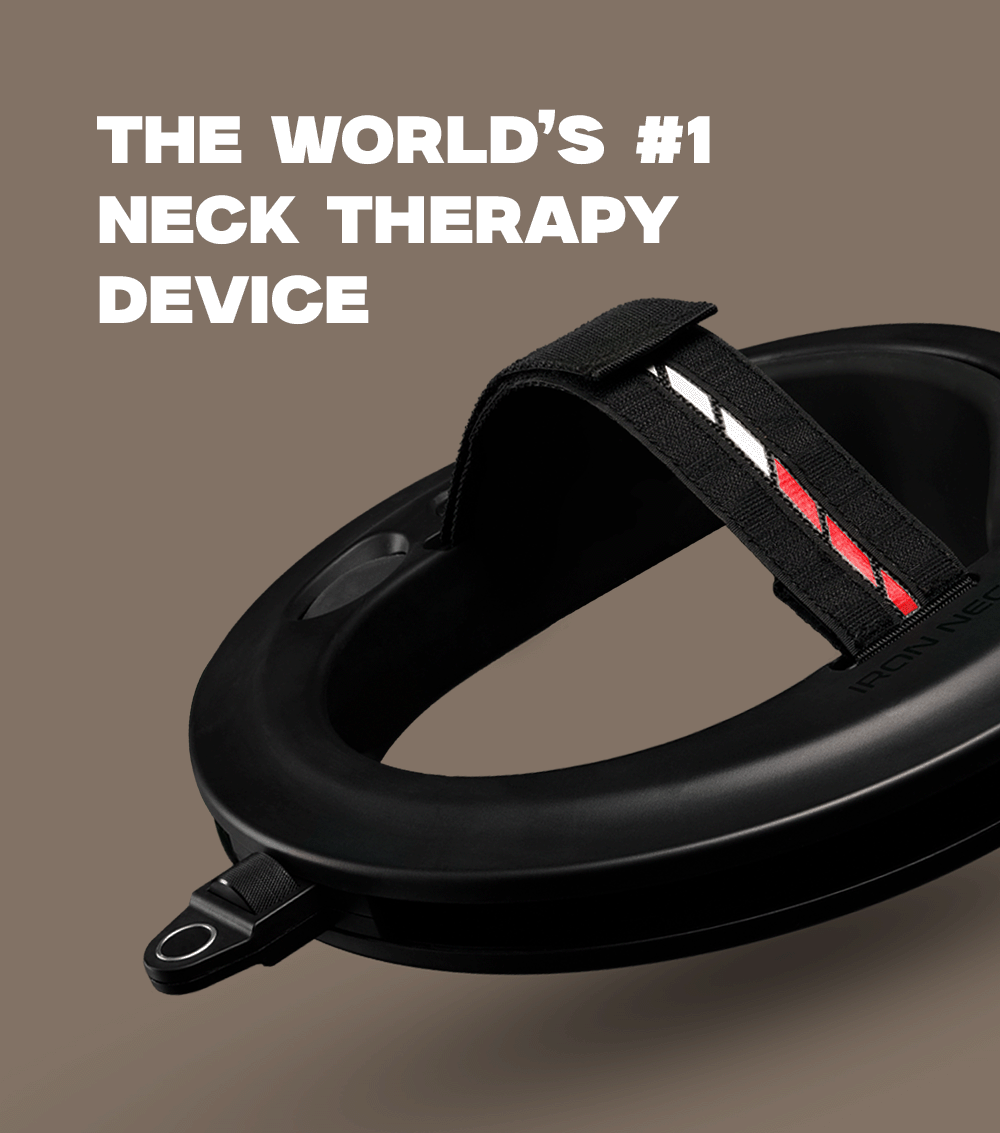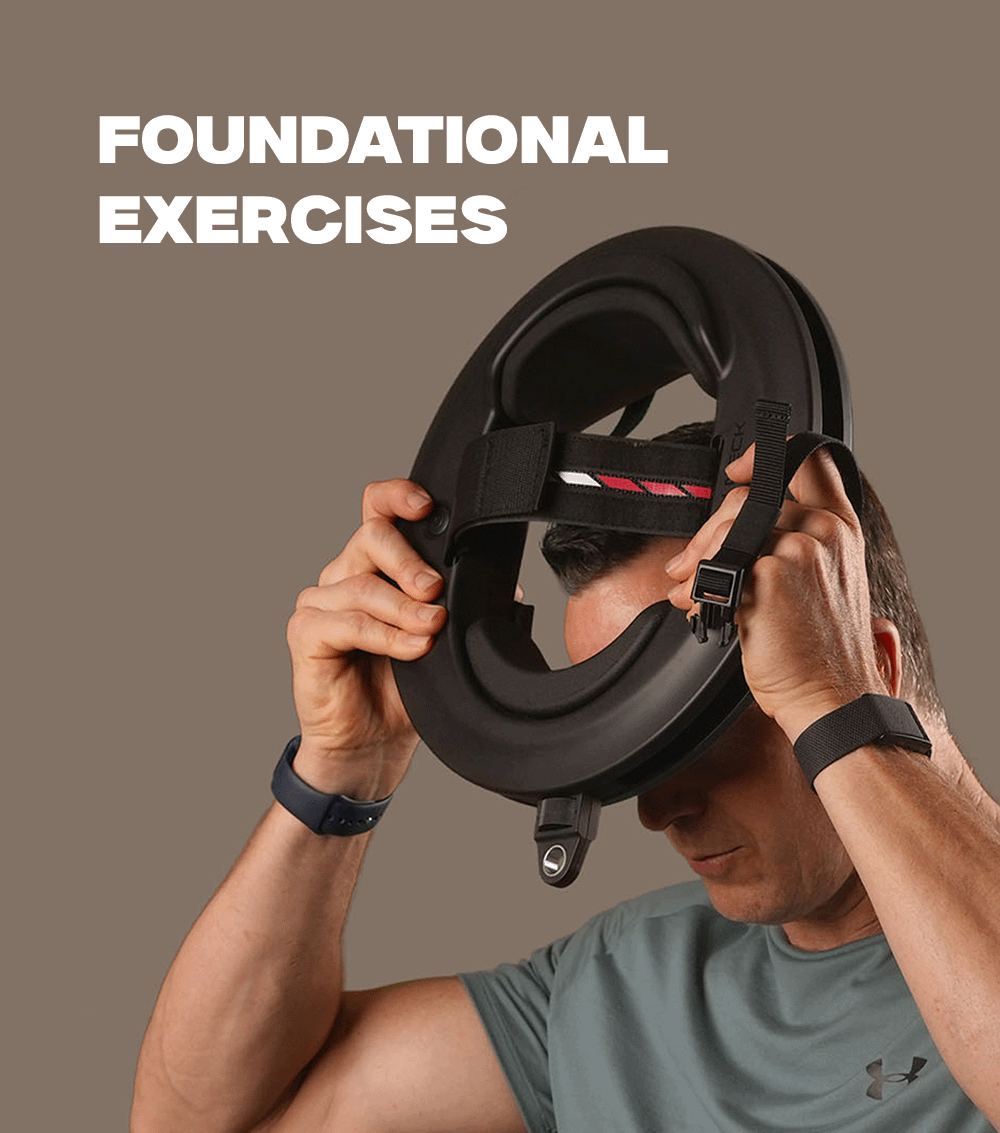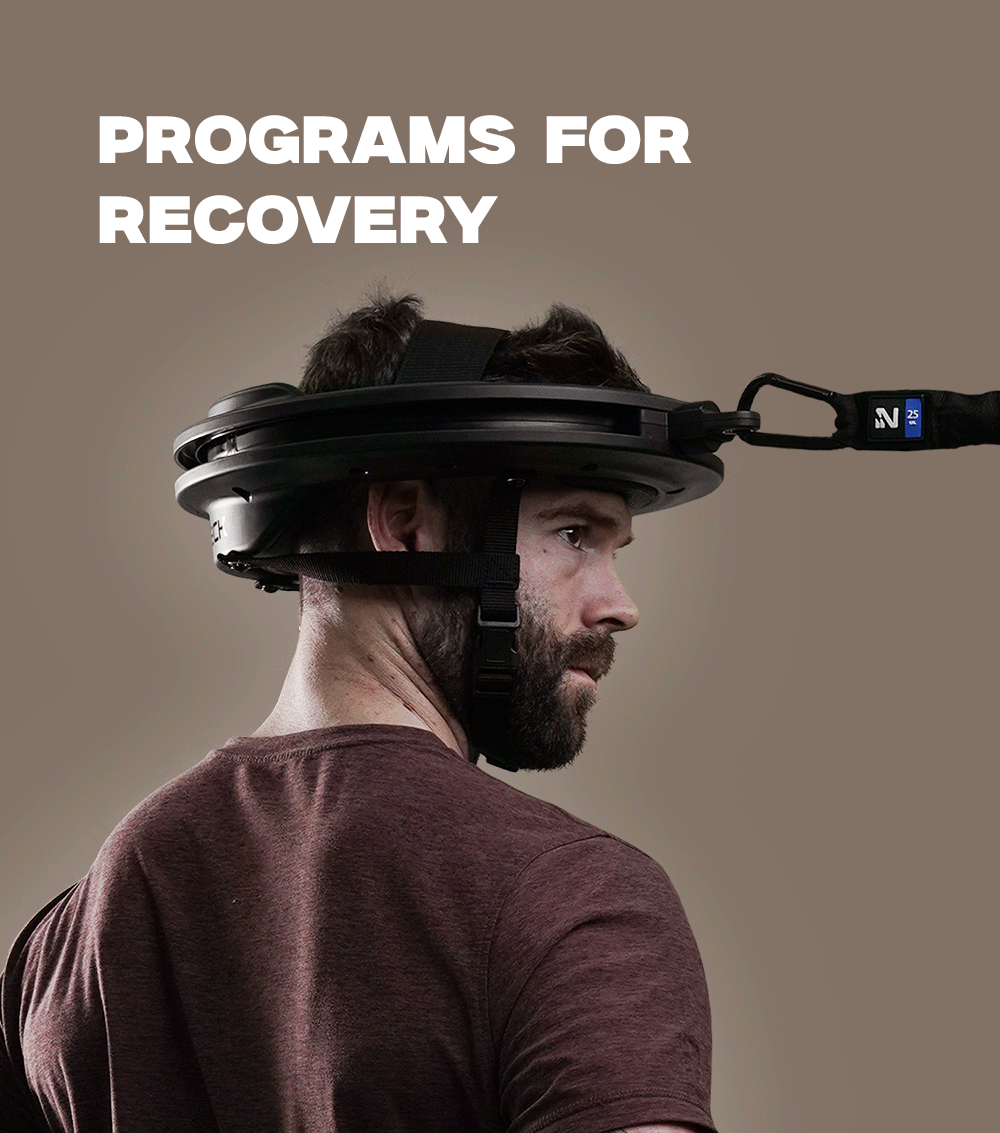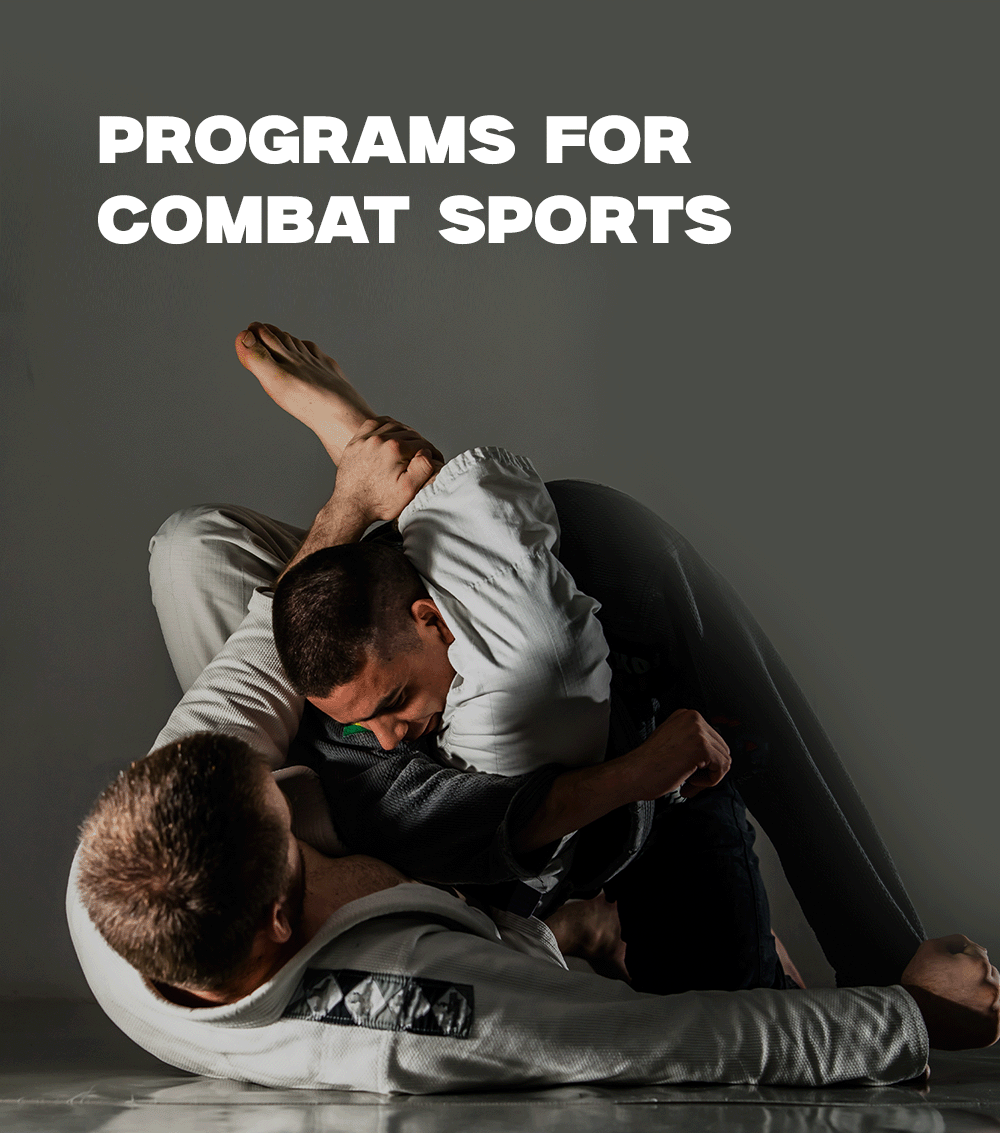Looking for information on rotator cuff rehab exercises? You’re not alone. Three million people every year have to work through a rotator cuff injury. This year, strength & conditioning coach Joe DeFranco is one of them.
Like many rotator cuff patients, DeFranco has to keep his injured arm immobile during the early stages of recovery. But DeFranco doesn't do immobility well, so he's keeping the rest of his body as mobile as possible and doing everything he can to stay ahead of the recovery curve.
"I’m trying to do everything in my power to keep my immobile left arm as ready as possible for when this damn sling comes off!”
Part of that everything is strengthening his levator scapula, a muscle shared by the shoulder - which he can't directly train - and the neck, which he can.
"I started incorporating cervical strength and mobility using the Iron Neck into my rehab. This is helping prepare my rotator cuff for a quicker recovery once I get the sling off. Strengthening the levator scapulae should give me a head start on the next phase of my physical therapy - active range of motion - without interfering in the healing process of the damaged tissue during this time of immobilization."
You're probably wondering - can I use the Iron Neck for rotator cuff rehab exercises as well? After all, you want to get back living your life without limits as quickly as possible.
Whether you're attempting to rehab the rotator cuff muscles naturally or you're recovering from a procedure, we'll help you overcome this obstacle through this complete guide. We'll cover the top rotator cuff rehab exercises with the Iron Neck to help you jumpstart your journey to recovery.
Why Rotator Cuff Rehab Exercises Focus on Levator Scapulae Linking Neck And Shoulder Movement
DeFranco is not the only one bringing levator scapula activation to rotator cuff rehab. Physical therapists are starting to incorporate the Iron Neck into their rehabilitation and prehab protocols for the rotator cuff.
"I don’t believe many people consider how the levator scapulae affects shoulder health and shoulder rehab," says Doug Goldstein of Vista Physical Therapy. "In order to elevate your shoulder, the levator scapulae needs to be strong and fatigue resistant. Nobody thinks about training their levator scapulae. They do think about lower trapezius, though. These muscles help upwardly rotate the shoulder blade, so I tell my patients that you can’t activate the lower trap in its entirety because you can’t actively get your shoulder blade fully rotating when your levator scapulae isn’t eccentrically strong."
Goldstein finds that improved control of the levator scapulae increases the potential to train the lower trapezius. For an athlete in an overhead sport like volleyball or tennis, greater overhead extension means greater force on serves.
Cross-Education: Immobile Side Knows What The Active Side Is Doing
As DeFranco is experiencing the hard way, the early stages of rotator cuff rehab do not allow patients much motion or loading on the affected arm. Patients will spend the first 4-6 weeks with the arm in a sling. However, this does not mean the patient cannot still train the affected side with loaded movements: they simply have to do it via the other side of the body.
We all remember learning in high school that each side of the brain controls the opposite side of the body. But to the extent that it is true, that is not an exclusive, one-to-one relationship. The resilience of the neuromuscular system owes a lot to its overlapping pathways and flexible, trainable patterns.
Cross-education is the process by which a movement on one side of the body activates neuromuscular pathways going to both sides. Studies have found that the "untrained" side - the side opposite the movement being performed, the side in the sling - can gain 50-80% of the trained side's improvement. These findings reinforce what many sports performance and rehab practitioners are already coming around to: strength and coordination are two sides of the same coin. Improving force and power production may have more to do with muscle activation patterns than what we traditionally consider to be "muscle strength."
In rehab, practitioners often need to find some way to increase the challenge for the patient without increasing the load. Targeting the muscle's activation patterns do just that.
Changing the complexity of movements by adding a new stimulus or by performing movements with one limb immobilized forces the "neuro" part of our "neuromuscular" system to adapt.
Using the Iron Neck to provide a low-load tension on the neck while one arm performs standard rotator cuff rehab movement and a sling holds the other arm in place checks both boxes. Rehab practitioners and patients can therefore train the levator scapula on both sides with the help of cross-education.
Rotator Cuff Rehab Exercises With The Iron Neck: Neck And Shoulders Above The Rest
Rotator cuff protocols with the Iron Neck follow similar progressions as Iron Neck's foundational program, along with standard rehab practice to move through isometric, eccentric, and concentric movements. Here's how to overcome neck muscle weakness and navigate rotator cuff rehab using Iron Neck...
Start With the 6 Foundational Movements
First things first - get the neck strengthening device you've heard all about, Iron Neck. This device is going to be an invaluable asset along your road to recovery. Otherwise, you can attempt to get by with a simple neck training harness. But trust us - the result won't be the same if you don't have the 360-degree movement that only the Iron Neck can offer.
For many people, neck training would be a new stimulus regardless of whatever injury brought them into the clinic. Before diving into the rotator cuff work, patients should start with Iron Neck's "F6" movements.
During the first few sessions post-injury or post-surgery, the patient may be strictly limited in the type, volume and target areas of their rehab movements, making this stage and these exercises an ideal match.
Progress to Isometric Neck Exercises for Rotator Cuff Rehab
Once the client establishes their baseline neck strength and coordination with the F6 concentric movements, they can use the Iron Neck to perform isometric neck exercises in support of shoulder movement.
The first phase can include unilateral rows, presses, internal and external rotation, row to overhead press, tricep extension and curls with a resistance band anchored near the Iron Neck's anchor point. The patient will need to face in different directions relative to the anchor points in order to perform these shoulder exercises, which means that with each exercise they will vary what their neck needs to do to keep everything stable and aligned.
Continue Progressing Movement Pattern Difficulty as Your Rehab Progresses
Later phases will compound concentric movements of both the neck and the shoulder. This increases the coordination challenge: simply adding one movement on top of another can induce the neuromuscular system to find more efficient ways to do both, while having the anchor point at head level stimulates new aspects of balance and posture.
By resisting the "pull" of the Iron Neck's cable while performing a shoulder movement, the client is aligning their neck with their shoulder blades, a combination that drives the development of proper posture.
The final phase also flips the original arrangement: concentric movements at the neck with isometric holds at the shoulder. The increasing difficulty of the movements parallels increasing volume. Those two progressions alleviate the need for increasing load in order to deliver a new stimulus. Light resistance is sufficient throughout the protocol, from the F6 movements to Phase 3.
For more recommendations on specific movements to add to your neck training regimen, explore our blog. We have resources on neck mobility exercises, neck spasm exercises, neck fat exercises, neck exercises for mass, turkey neck exercises, exercises to tighten neck, and even nerd neck exercises.
From there, you can learn the basics of how to get a thicker neck - including how long you can expect to wait for neck training results, neck training frequency, how to build neck muscles at home, and the benefits of neck training in the first place.
Levator Scapulae Training Can Help Restore The Shoulder To Full Function
For rehab practitioners like Doug Goldstein and superactive people like Joe DeFranco, the top priority for any new protocol is shortening the return-to-play pipeline.
Early results from combining Iron Neck with rotator cuff protocols suggest that cross-education takes place and improves the rehab process. The combination of neck activation - particularly in the levator scapulae - with standard rotator cuff rehab / prehab movements is a potent neuromuscular stimulus. The increased cognitive demand increases the potential for self-organization within the neuromuscular system, which lends itself to cross-education.
Even if there was no cross-education, bringing the Iron Neck into rotator cuff training will improve movement and posture by activating muscles that our usual head-down-looking-at-a-screen lifestyle causes us to overlook or mistreat.
Any time we can use all muscles in the proper way, movement improves, whether that movement is for sports performance or everyday life. The levator scapulae are too often missing from our movements, and neck training in the context of shoulder movement will restore it - and us - to its proper function.
Bringing Our Conversation on Rotator Cuff Rehab Exercises to a Close
As you can see, the Iron Neck plays a profound role in helping you navigate the road to recovery after a rotator cuff injury. While you can sit in sorrow waiting for the healing process to pick up speed, we know the athlete in you wants to be more proactive with rotator cuff rehab exercises.
And now that you know how to get started performing exercises for rotator cuff rehabilitation, what are you waiting for? Get your Iron Neck device today and consult your physical therapist or reach out for advice on incorporating the Iron neck into your rehabilitation goals.






